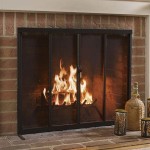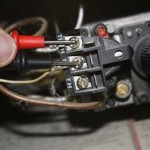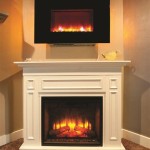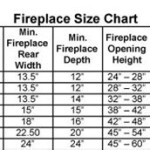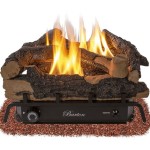Exploring the Enduring Appeal of Antique Cast Iron Fireplace Fenders
Antique cast iron fireplace fenders represent a significant element of historical interior design, offering both functional protection and aesthetic enhancement to hearth spaces. These robust barriers, typically positioned in front of the fireplace opening, served a crucial purpose in preventing stray embers and sparks from damaging carpets and furniture. Beyond their utilitarian function, antique fireplace fenders exemplify the craftsmanship and artistic sensibilities of past eras, providing valuable insights into historical metalworking techniques and design trends.
The use of cast iron as the primary material for these fenders contributes significantly to their durability and decorative potential. Cast iron, an alloy of iron, carbon, and silicon, possesses a high tensile strength and can be molded into intricate shapes with relative ease. This characteristic allowed artisans to create fenders adorned with elaborate patterns, motifs, and embellishments, transforming what could have been a purely practical object into a focal point of the room. The inherent heat resistance of cast iron further enhanced its suitability for placement near the intense heat of a fireplace.
The historical context surrounding antique cast iron fireplace fenders reveals a gradual evolution in design and manufacturing. In the earlier periods of their use, fenders were often produced by skilled blacksmiths and smaller foundries. These early examples frequently exhibit a more rustic, hand-forged quality. As industrialization progressed and large-scale foundries became more prevalent, the production of fireplace fenders became more streamlined and standardized, leading to a wider availability of designs and styles. The rise of different architectural periods, such as the Victorian and Edwardian eras, also influenced the aesthetic characteristics of these fenders, contributing to the diversity of styles encountered in the antique market.
Functionality and Protection
The primary function of a fireplace fender, irrespective of its age or material, remains the prevention of hazards associated with open fires. Prior to the widespread adoption of enclosed fireplaces and more efficient heating systems, open hearths were the primary source of warmth in many homes. These open fires, while providing necessary heating, also presented a significant risk of accidental fires. Embers and sparks could easily escape the confines of the fireplace, landing on flammable materials such as carpets, wooden floors, and upholstered furniture. A well-placed fireplace fender acted as a physical barrier, containing these errant embers and minimizing the risk of fire damage.
The height and depth of the fender were critical factors in determining its effectiveness. A fender that was too low or too shallow would not provide adequate protection, whereas a fender that was excessively large could be cumbersome and aesthetically unappealing. The design often incorporated a raised edge or a lip to further contain any sparks or embers that might bounce off the surface of the fender. The robust construction of cast iron ensured that the fender could withstand the impact of falling logs or hot coals without being easily damaged.
While the protective function of the fender is paramount, it also served to define the hearth space, creating a visual boundary between the fire and the surrounding room. This delineation helped to maintain a sense of order and control within the interior, contributing to the overall aesthetic appeal of the fireplace area. In some cases, fenders were designed with integrated seating or footrests, providing additional comfort and functionality for those gathered around the fire.
Design and Aesthetic Variations
The aesthetic diversity of antique cast iron fireplace fenders reflects the wide range of design styles and decorative motifs prevalent throughout history. From simple, unadorned designs to highly ornate and elaborately decorated examples, there is a style of fender to complement virtually any interior. The Victorian era, in particular, witnessed a flourishing of decorative arts, and this is reflected in the intricate patterns and embellishments found on many Victorian fireplace fenders.
Common decorative motifs include floral patterns, geometric designs, and representations of mythological or historical figures. Some fenders feature intricate cast iron fretwork, allowing air to circulate while still providing effective protection. The use of different casting techniques and finishes further enhanced the visual appeal of these fenders. Some examples were painted or enameled in vibrant colors, while others retained their natural iron finish, often polished to a high sheen. The choice of finish often depended on the intended style of the room and the personal preferences of the homeowner.
The size and shape of the fender also varied depending on the dimensions of the fireplace and the overall design of the room. Some fenders were rectangular in shape, while others were curved or bowed to better accommodate the shape of the hearth. The height of the fender could also vary, with some examples being relatively low and discreet, while others were taller and more imposing. The selection of an appropriate fender required careful consideration of the scale and proportions of the fireplace area to ensure a harmonious and balanced aesthetic.
Identifying and Preserving Antique Fenders
The antique market offers a wide array of cast iron fireplace fenders, ranging from relatively common examples to rare and highly sought-after pieces. Identifying genuine antique fenders requires a keen eye and a basic understanding of historical manufacturing techniques and design styles. Several factors can help in determining the age and authenticity of a fender, including the presence of maker's marks, the quality of the casting, and the overall design and construction. The presence of rust or corrosion is not necessarily indicative of a lack of authenticity, but it is important to assess the extent of the damage and the potential for restoration.
The condition of the fender is a crucial consideration when evaluating its value. Fenders that have been well-preserved and retain their original finish are typically more valuable than those that have been heavily damaged or significantly altered. However, even damaged fenders can be valuable if they are rare or historically significant. The decision to restore an antique fender should be carefully considered, as improper restoration can diminish its value and historical integrity. It is generally advisable to seek the advice of a qualified conservator or antique dealer before undertaking any restoration work.
Proper care and maintenance are essential for preserving antique cast iron fireplace fenders. Regular cleaning with a soft cloth and mild detergent can help to remove dust and grime. Avoid using abrasive cleaners or harsh chemicals, as these can damage the finish and potentially corrode the iron. If the fender is exposed to moisture, it is important to dry it thoroughly to prevent rust. Applying a thin coat of wax or oil can help to protect the iron from corrosion and maintain its luster. With proper care, an antique cast iron fireplace fender can be enjoyed for generations to come, serving as a tangible link to the past and a beautiful addition to any home.

Antique Victorian Art Nouveau Cast Iron Fireplace Fender Founders Antiques

Small Victorian Cast Iron Fireplace Fender

A Gothic Revival Cast Iron Fireplace Fender Westland London

Antique Victorian Art Nouveau Cast Iron Fireplace Fender Founders Antiques

Art Nouveau Cast Iron Copper Fender 4554fe

Old Cast Iron And Brass Fireplace Fender

Victorian Cast Iron Fender 3033fe Antique Fireplace Co

Antique Fireplace Fender

Rare Antique Fireplace Tools Brass Over Cast Iron Pick Solid Heavy Base

Antique Victorian Art Nouveau Cast Iron Fireplace Fender Founders Antiques

